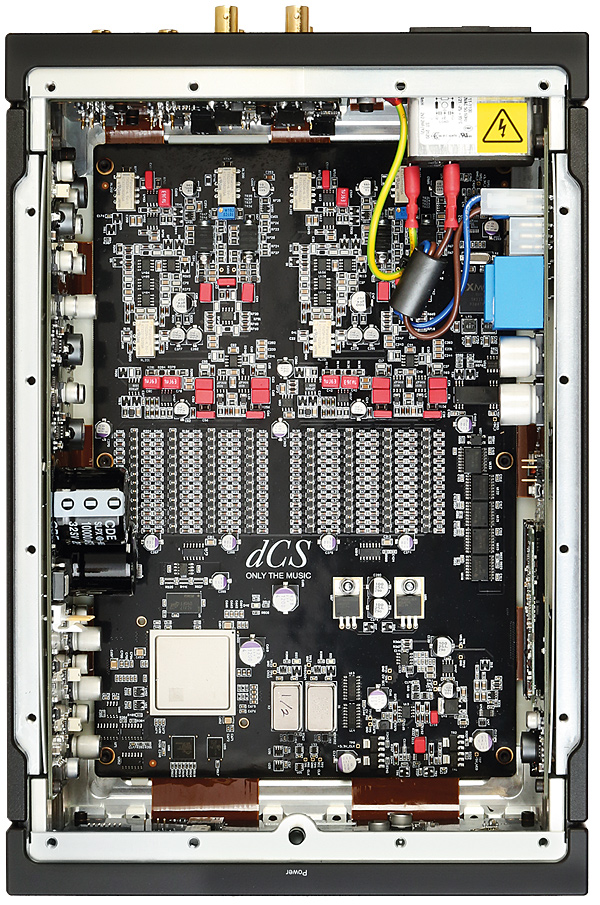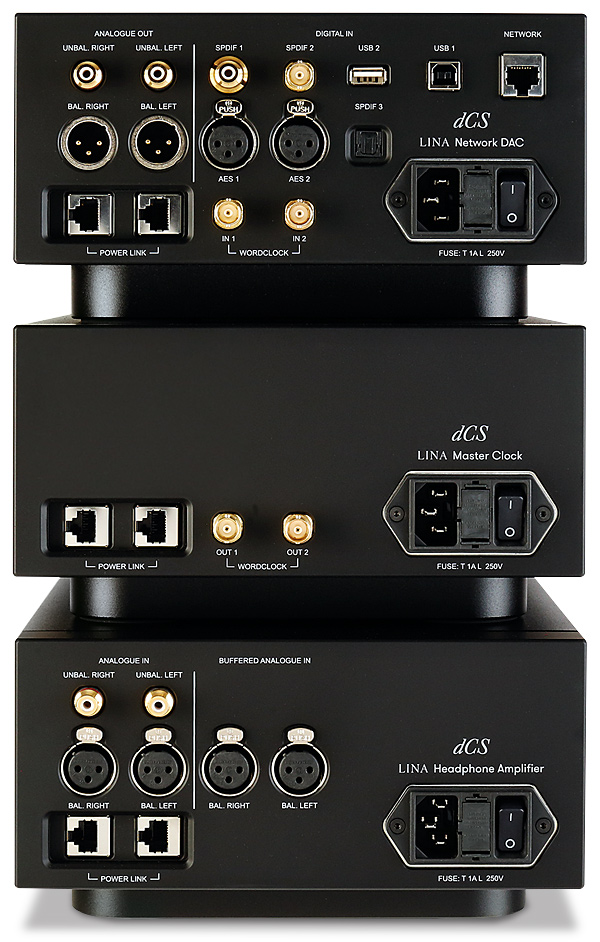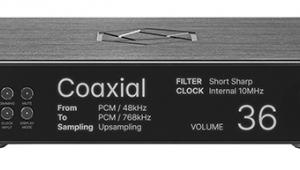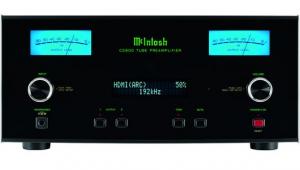dCS Lina System DAC/Headphone Amp Page 2
Of rather more concern was that harnessing the Network DAC to the Master Clock failed to elicit any significant uplift to what was already a superb sound. Yes, perhaps there was a minimal increase in focus with the add-on clock in use, but the internal clocking of the DAC seemed already to be doing an excellent job…
But first the headphone experience, and whether playing DSD files from my NAS or simply streaming Internet radio, upsampling the 320kbps stream to DXD, the Lina system proved an exceptional listen, especially with highly revealing headphones like the Oppo PM-1 planar magnetics [HFN Jul '14]. Playing the recent Houston Symphony Orchestra/Orozco-Estrada 'EP' release of Leonard Bernstein's West Side Story Suite [Pentatone PTC5187014; DSD64], the combination of the clarity and the crispness of the Network DAC and the Headphone Amplifier's weight and punch proved both thrilling and totally compelling.

Setting The Stage
There's some serious power here, even with demanding 'phones like the PM-1s, revealed in the great lyrical sweeps of the music and the taut rhythms of the 'Mambo' and 'Cha-Cha' sections. Dial in a little of the crossfeed available via the DAC, and it's possible to create a very 'un-headphone-like' sound, with all the spaciousness of listening to good speakers, from the slam of the rich bass to the sense of a soundstage spread before you.
With the much more relaxed tones of the Philip Clouts Quartet's 'Nine Tales' from the 2010 Sennen Cove album [Point Records PCD025], there was a lovely sense of space and ease about the presentation via these dCS components, every note of Clouts' piano crystal-clear against the restrained bass and drums, while the sax had a solid presence amidst the soundstage. I came to this album having just heard a variation of this group from a front-row seat in a small jazz club, and the effect the Lina package delivered, whether via headphones or with the Network DAC running into my amp and speakers, was entirely persuasive.
Not that you need to go for subtle jazz to hear the abilities of the Lina system in action. With the bombast of Muse's Will Of The People [Helium 3/Warner Bros 0190296383731], complete with operatic histrionics, buzz-saw guitars and pounding rhythm section, the sound was opened up wide for inspection. Without any restraint being applied, the touching 'Ghosts (How Can I Move On?)' and the driving 'Euphoria', with its charging synths and big choruses, blossomed into their own, distinctive acoustics.
Up To Scratch
The Headphone Amp consistently delivered a big, bold high-energy sound entirely suited to the grand visions of Matt Bellamy's little band. However, just be careful with the volume control or your ears may well succumb to the fate promised in the final track!

Mind you, that focused sound was just as well suited to the skanking rhythm of Junior Murvin & Jah Lion's 'Police And Thieves' from Lee 'Scratch' Perry's King Scratch compilation [Trojan/BMG TJDCD605], the deep dub bass and tinkling, tripping percussion delivered impeccably to underpin the vocals.
What's more, with the Network DAC upscaling to DSD into my main system, even those live BBC Proms relays sounded suitably open and atmospheric. The BBC Symphony Orchestra performance of Holst's The Planets benefitted from the muscular delivery and tight handling of rhythms, while the ethereal sound of 'Neptune' – with the voices of the BBC Symphony Chorus fading into the Royal Albert Hall acoustic – luxuriated in the sheer resolution on offer here. It's a scintillating sound, whether played through a large system or – courtesy of BBC Sounds – experienced through the Headphone Amplifier.
Hi-Fi News Verdict
The price of the complete Lina stack is a head-turner, so it makes more sense if you view the components as separates, and build accordingly. The Network DAC is the star here, and will surely find a role in high-end streaming systems, while the Headphone Amplifier is mighty powerful, and will drive the most demanding of 'phones with real conviction. And the Master Clock? Well, you pays your money…


















































